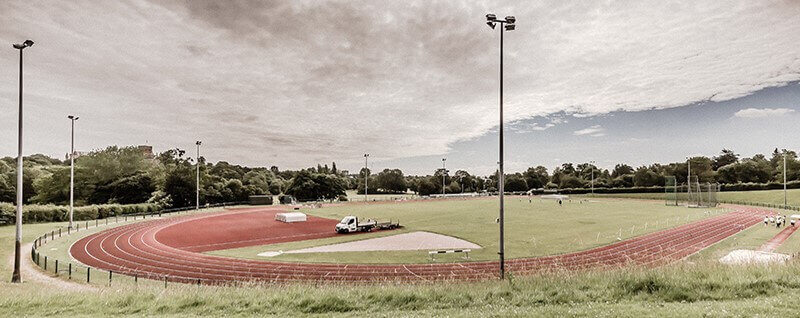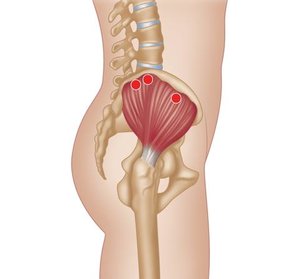Its an all too familiar occurrence for masters athletes, we train hard and then your knee hurts. So you take some time off to recover or decrease your training for the week. Maybe you even ice, change your shoes, or get on a foam roller and stretch.
Whilst these are considered normal and logical steps to take to alleviate the pain, there is one factor that is often overlooked by athletes especially us ageing ones. A little important muscle called the gluteus medius can be the culprit in chronic, recurring conditions such as Runner’s Knee, Iliotibial Band Friction Syndrome, Achilles issues, and low back pain to name but a few.
Lets take a look at how to spot and also improve the issue!
The gluteus medius is one of three muscles that make up the gluteals. It, along with the gluteus minimus, abducts (lift the leg away from the body) and internally rotates the hip. During the mid-stance phase of running (or walking), the gluteus medius must contract to stabilize the femur and pelvis. While some rotation of the hips while running is normal, excessive rotation can be problematic. Try these 2 simple tests at home to see if your gluteus medius is weak:
1) While standing in front of a mirror, perform a single leg squat. If the opposite hip of the leg that you are standing on drops, or if the knee of the leg you are standing on rotates inward, that indicates a weakness in the gluteus medius.
2) Perform a bridge. You should feel a contraction in your glutes. If you are feeling this exercise predominantly in your hamstrings, the firing pattern of your glutes is off (you are not contracting your glutes when you should be). Now, from the bridge position, lift one leg up off of the ground so you are now supporting yourself on one leg. If your hip drops that indicates a weakness in the support leg.

our hip drops while you are in the mid-stance phase of running, that indicates a weakness in the gluteus medius of the leg that is currently supporting your body weight.
If any of those tests revealed a weakness in the gluteus medius, you must address the weakness if you are going to correct the cause of any injuries you are experiencing due to that weakness. Simply taking rest time will not correct the underlying cause of your issues.
Fixing the Issue
The first exercise to address a weak or poorly firing gluteus medius is called a clam shell.
To begin this exercise, lay on your side and be sure to keep your spine straight. Your body should be in alignment from the hips all the way up through the torso, don’t let your body slump into the ground. This way, you will ensure that you are using the correct muscle to perform the exercise and not compensating with other muscles. Bend your knees and rest your feet on top of one another. From this position, lift only the knee of the top leg until is it level with your hip. Now you have “opened the clam shell.” You should feel this contraction in your gluteus medius the entire time. Perform 2 – 3 sets of at least 20 reps. Make sure to perform this exercise on both sides of the body.
The next exercise is a little more advanced and requires either a trip to the gym or a theraband tied to your doorknob at home. You should be able to comfortably perform a clamshell and be able to balance on one leg for 30 seconds before adding this next exercise to your routine.
The single leg cable row is an efficient exercise to train single leg balance, rotational stability, as well as scapular stability. Set up the cable row machine so that when you reach your arm out straight in front of you, your hand will be in line with handle of the machine. Stand on one leg, and grip the handle of the cable with the opposite hand (stand on left leg, grip handle with right hand).
Before you begin, you should engage your core muscles. Imagine you are about to be hit in the stomach, Tighten up your muscles to brace for the hit, but don’t hold your breath. This is the contraction you should feel in your core throughout this exercise.
Now, pull the cable towards you so your right hand will end up near your right hip. Focus on bringing your right shoulder blade towards your spine. You want to “pinch” the shoulder blades together. While you are focusing on this upper extremity movement, your left gluteus medius is going crazy to maintain rotational stability of your femur and hip. It is firing to keep you upright, otherwise, the force of the cable pulley would cause you to lose your balance. Perform 2 – 3 sets of 10 reps on each leg.
A great thing about this exercise is that it is very functional for running. It incorporates single leg stance and opposite upper extremity rotation, which occurs with each step that we run.


